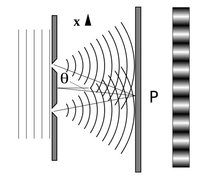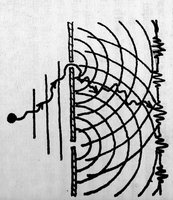D
Deleted member 4993
Guest
You said that before...Again, your sigma notation is awful and has yet another typo in it.
It appears that you aren't actually trying to sum anything. If you want to do what you are saying that you do then you simply define the set
[math]\begin{Bmatrix} {\frac{\vec\gamma_e^\mathfrak{e}1}{1},\frac{\vec\gamma_e^\mathfrak{e}4}{2},\frac{\vec\gamma_e^\mathfrak{e}9}{3} ,\frac{\vec\gamma_e^\mathfrak{e}16}{4},\frac{\vec\gamma_e^\mathfrak{e}25}5},\frac{\vec\gamma_e^\mathfrak{e}36}{6},\frac{\vec\gamma_e^\mathfrak{e}49}{7},\frac{\vec\gamma_e^\mathfrak{e}64}{8}, ~{...} \end{Bmatrix}[/math]
I'm going to (have to) take a guess and say that you really don't know much of any Math higher than the High School level, or there-abouts. Which means your commentary on the PDEq solution you wrote down is simply copied not part of the Math that you know how to do. If you have done this then you are simply trying to impress someone and that's going to cause you many many problems. If you didn't do this then I can't explain how you can screw up the sigma notation so badly and claim that you know any Math. Which is going to cause you many many problems. In other words you are kidding yourself that you can even hope to understand something as complicated as QFT, even though that's what you think you have made an impression in.
Let's talk about the Math in QFT for a second.
Quantum Field Theory is the merging of SR and QM. It has a rather exacting amount of detail as to what can go into it and make sense. It relies heavily on Group Theory. There are two kinds of spaces: "real spaces" (ie. Minkowski space-time) and "Hilbert spaces" (where the internal properties live.) You can't do without both of them. The aether is not needed for any of this because material (or even massless) "particles" are neither waves nor actual particles: they have aspects of both but are neither. They don't actually need anything to "wave" in. We have no real-world macroscopic examples of any of them. All we know are their properties.
And we know them very well. QED is just about one of the best tested theories out there and it is the most accurate and precise of them. GWS electroweak is the second best. Your aether theory, which contains nothing of the complexities nor the necessary Mathematical equipment, must make the same predictions that these theories do. You aren't going to be able to do that, if for no other reason that the aether has been proven not to exist.
I don't know why you are holding on to the aether idea and I really don't care. You asked for Math help and you simply aren't up to the conversational level that you need. Your attempted notations are terrible and have no antecedents in any Physics that I have come across. And that's just your introductory statement.
I can't teach you Group Theory starting from High School algebra so there's really nothing more I can do here. I'm sorry, but I am done with this.
-Dan
Response #14.....I'm not your man. I have better things to do with my time....


